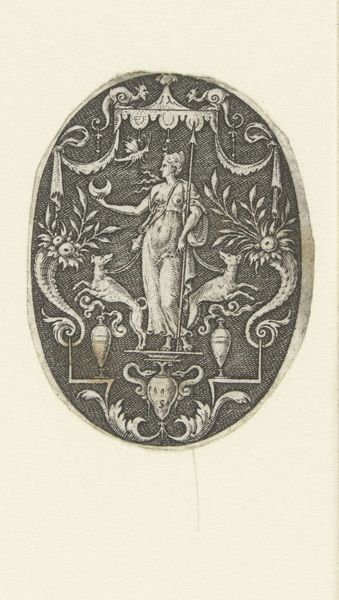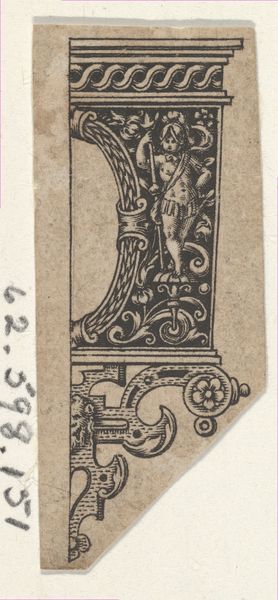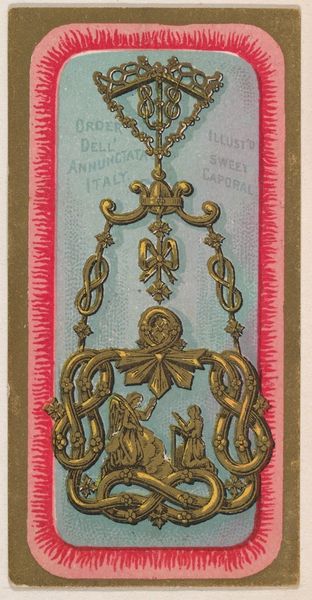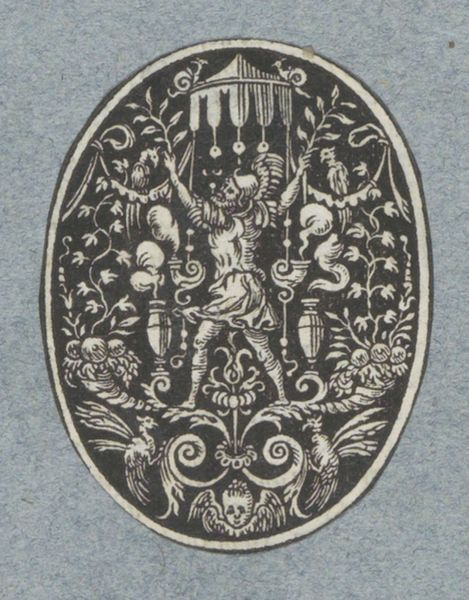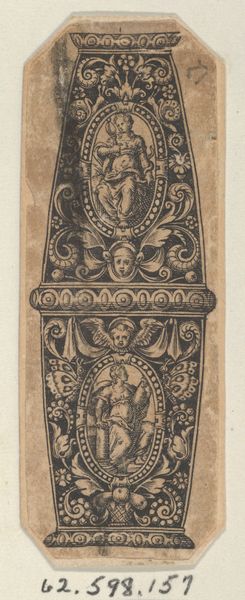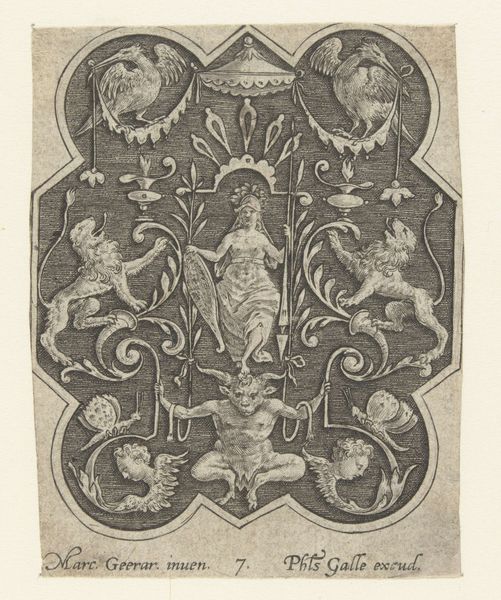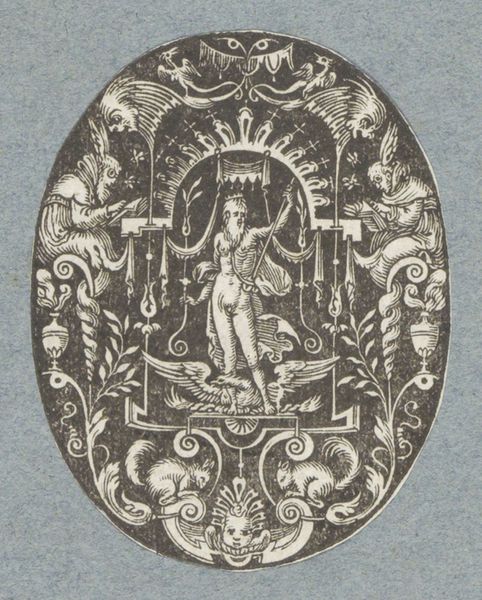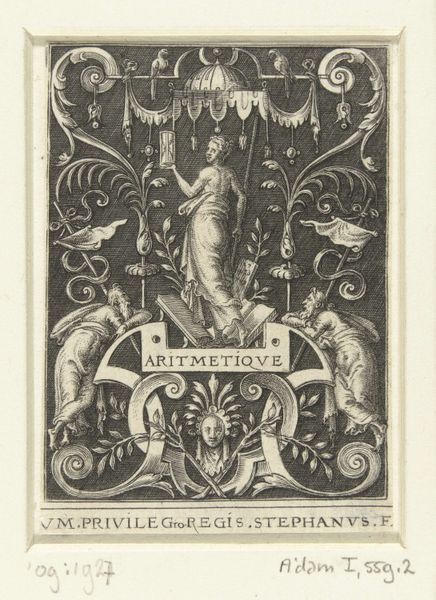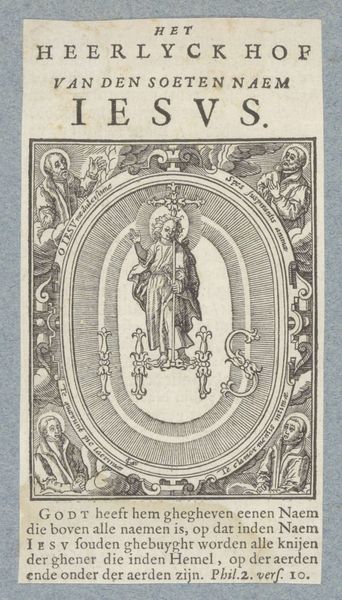
Design for a Knife Handle (Fragment from Manches de Coutiaus) 1580 - 1600
0:00
0:00
drawing, print, engraving
#
drawing
#
face
# print
#
mannerism
#
figuration
#
form
#
engraving
Dimensions: Sheet (trimmed): 1 3/4 × 3/4 in. (4.4 × 1.9 cm)
Copyright: Public Domain
This is an engraved design for a knife handle, made by Johann Theodor de Bry around the turn of the 17th century. It's a glimpse into the visual culture of early modern Europe, when even everyday objects were adorned with symbolic imagery. The design incorporates classical motifs, like the female figure in the oval, perhaps representing virtue or a mythological goddess. These references to classical antiquity weren't just decorative. They signaled the owner's education, their place within a social hierarchy that valued learning and refinement. The cherubs and monstrous figures mixed in with foliage also show the taste for elaborate ornament that defined the period. De Bry was part of a robust printmaking industry in Europe. The design would have circulated among craftsmen and patrons, shaping tastes and influencing the production of luxury goods. Understanding this image involves research into period ornament, the history of printmaking, and the social rituals surrounding dining and display in the 16th and 17th centuries. The image reminds us that art is always embedded in specific social and institutional contexts.
Comments
No comments
Be the first to comment and join the conversation on the ultimate creative platform.
